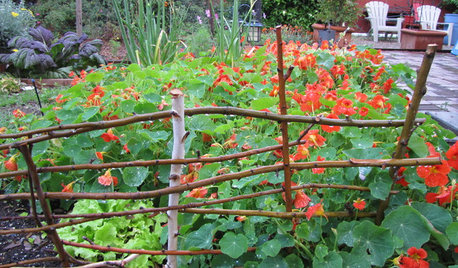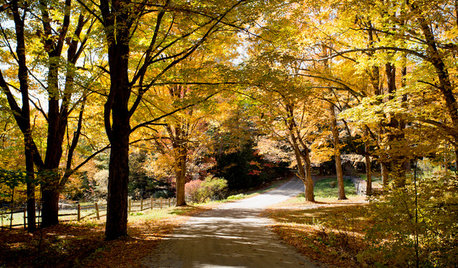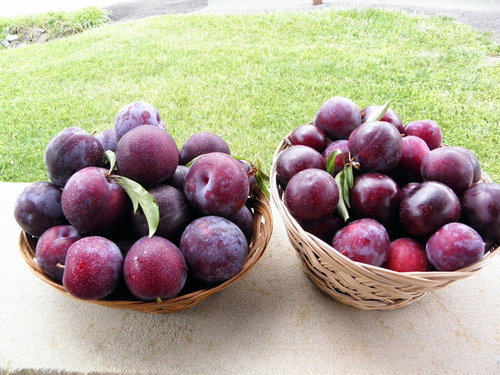Damson Plums (yesterday's harvest)
appleseed70
9 years ago
Related Stories

FRUIT TREESHow to Grow Your Own Juicy Plums
Easier than other stone fruits and with a variety of colors to choose from, plums are a versatile garden addition
Full Story
GARDENING AND LANDSCAPINGWorld of Design: 10 Home Gardeners Show Us Their Sweet Summer Harvests
From New York to Tokyo, these gardeners have turned their yards, terraces and rooftops into places of bounty
Full Story
LIFEHard Winter? 9 Ways to Battle Cabin Fever
We know a lot of you are trapped where it just won’t stop snowing. Here are some ways to survive
Full Story
EDIBLE GARDENSHow to Grow Your Own Sweet Summer Crops
This guide will help any gardener get started on growing the freshest warm-season veggies and berries for summer
Full Story
EARTH DAY5 Ideas for a More Earth-Friendly Garden
Consider increasing the size of garden beds, filtering rainwater and using plants to reduce energy use
Full Story
GARDENING GUIDES6 Gift-Giving Gardens for Delights Beyond the Visual
Grow your own natural dyes, snip herbs for home brews and more ... these creative gardens have benefits beyond beauty alone
Full Story
MONTHLY HOME CHECKLISTSSeptember Checklist for a Smooth-Running Home
Get ready to get cozy at home with snuggly blankets, well-stocked firewood, added insulation and more
Full Story
FALL GARDENINGHouzz Call: Show Us Your Autumn Views
Share your pictures of fall foliage and decor in the Comments. Your photos may be featured in an upcoming story!
Full Story
FRUIT TREESHow to Grow Your Own Persimmons
Sturdy and easy to care for, these trees offer bright fruit through winter — and keeping them in bounds is no sweat
Full Story
DECORATING GUIDESLessons in Living Comfortably: Embrace the Scratches and Dents
When you celebrate wear and tear, you send a message that your home is designed for relaxation
Full StoryMore Discussions




fruitnut Z7 4500ft SW TX
fruitnut Z7 4500ft SW TX
Related Professionals
West Milford Landscape Architects & Landscape Designers · Wrentham Landscape Architects & Landscape Designers · Glassmanor Landscape Architects & Landscape Designers · Kapaa Landscape Architects & Landscape Designers · Manorville Landscape Architects & Landscape Designers · Saint Louis Park Landscape Architects & Landscape Designers · Hayden Landscape Contractors · Kearny Landscape Contractors · Lakeville Landscape Contractors · River Ridge Landscape Contractors · Saint George Landscape Contractors · Wareham Landscape Contractors · Kingsburg Landscape Contractors · Baileys Crossroads Landscape Contractors · Suisun City Landscape Contractorsappleseed70Original Author
appleseed70Original Author
appleseed70Original Author
appleseed70Original Author
appleseed70Original Author
appleseed70Original Author
appleseed70Original Author
fruitnut Z7 4500ft SW TX
appleseed70Original Author
appleseed70Original Author
appleseed70Original Author
nyRockFarmer
alan haigh
appleseed70Original Author
alan haigh
Konrad___far_north
alan haigh
appleseed70Original Author
nyRockFarmer
appleseed70Original Author
appleseed70Original Author
appleseed70Original Author
alan haigh
floral_uk z.8/9 SW UK
nyRockFarmer
appleseed70Original Author
myk1
alan haigh
rayrose
appleseed70Original Author
rayrose
myk1
alan haigh
appleseed70Original Author
rayrose
appleseed70Original Author
nyRockFarmer
alan haigh
nyRockFarmer
nyRockFarmer
rayrose
appleseed70Original Author
alan haigh
rayrose
tomIL
clarkinks
skyjs
appleseed70Original Author